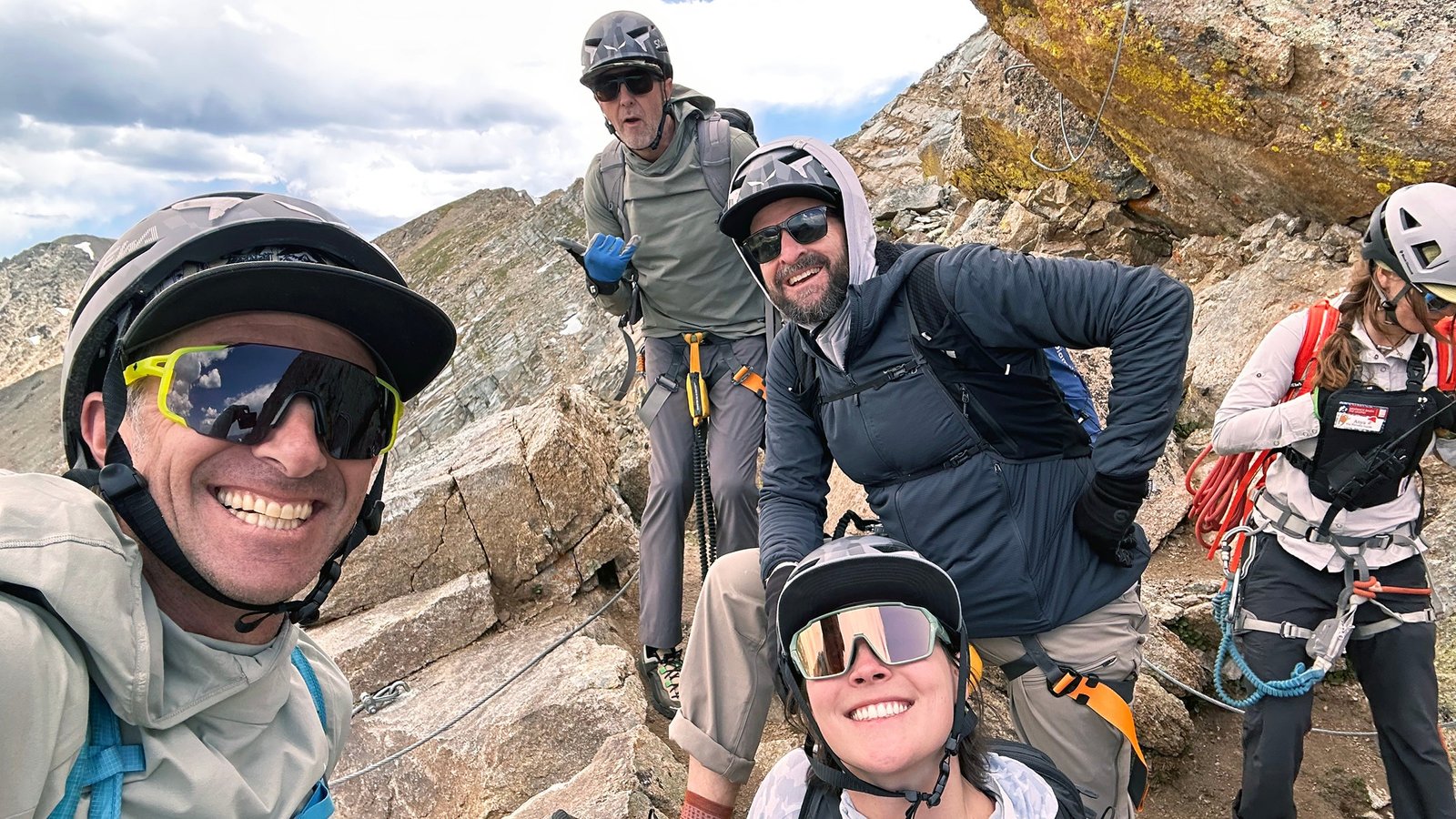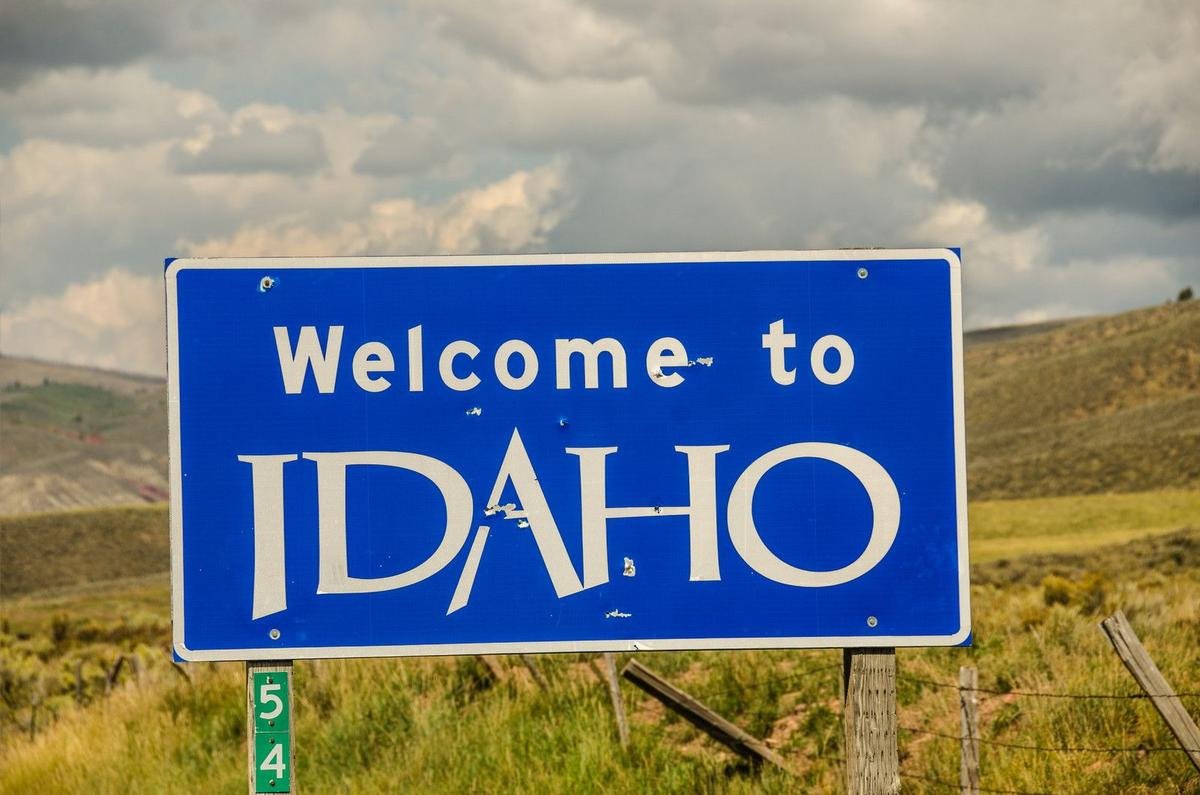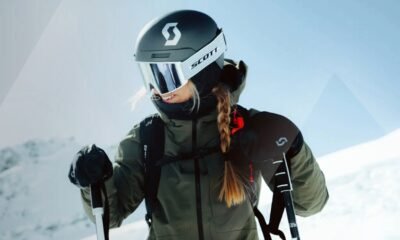Published August 7, 2025 02:11PM
Destinations & Things To Do
Why These Are My Two Favorite Summer Jackets

If you buy through our links, we may earn an affiliate commission. This supports our mission to get more people active and outside.Learn about Outside Online’s affiliate link policy
I keep these Flylow and Rab jackets handy year-round for their combination of warmth and breathability
(Photo: Jakob Schiller)
Even though the high temperatures where I live in Albuquerque, New Mexico, have averaged 95 degrees over the past three months, and my wardrobe has been reduced to shorts, sun hats, the most breathable shirts I can get my hands on, I’ve also been appreciating two summer jackets. To be clear, I’m not wearing these jackets during a run at noon. But on occasion, even in this sweltering heat, I’ve needed a layer to block wind and keep me warm without broiling me. These are the two standout summer jackets that get the job done—rain, shine, or suffocating heat.
The Windproof (But Breathable) Summer Jacket That’s Created by Mountain Bikers
Case in point: I recently ran up 10,500-foot Sandia Mountain, and up top the wind was howling and temps were in the low 50s. When I stopped to refuel and take in the view, I pulled out my trusty Flylow Davis Jacket ($140) to cut the wind and keep from getting chilled.
Flylow Davis Jacket
Made from a DWR-coated, stretchy ripstop nylon, the Davis summer jacket balls up to the size of an apple so it takes up almost no room in my running pack and adds almost zero weight at just over six ounces. In the summit wind, it created immediate warmth and endured getting scraped over rocks without showing any signs of wear. Just as importantly, since the Flylow Davis doesn’t block all the breeze, I was also able to keep it on as I started my descent and didn’t overheat as I worked my way back into warmer temps.
Flylow co-founder Dan Abrams told me that the company spent an obsessive amount of time picking the fabric for the Davis because they wanted to find the perfect mix of wind resistance and breathability. An avid mountain biker himself, he designed the jacket so he could wear it to keep warm while ripping down singletrack, cruising on the flats, or pushing during the next climb.
“Just like it’s easy to make a ski jacket waterproof but harder to make it breathable, it’s easy to make a wind jacket windproof but much harder to create the right balance of breathability,” Abrams said.
Flylow considers breathability so important that they list the jacket’s air permeability rating on their website. CFM stands for “cubic feet per minute,” and it relates to how much air can pass through fabric—one component of breathability. For context, a trashbag’s CFM is zero, a cotton t-shirt has a CFM of around 60, and the most permeable tech running shirt we’ve tested came in at 464 CFM. The Davis’s CFM, listed at 22.8 (verified by the Outside Lab), clearly blocks wind better than a shirt, but is far enough away from a trashbag that you really notice the airflow when it’s needed.
The Lightweight Wonder with Insulation Worth Geeking Out Over
Rab Evolute Hoody
$165 at REI $165 at Backcountry
The second summer jacket in my summer wardrobe came with me to the 13,000-foot top of Arapahoe Basin’s East Wall in Colorado. Long known as a fun place to ski steep terrain, the East Wall is also the spot for the ski area’s via ferrata course. I had just scaled the wall with a group, and emerged at the top ready for lunch. The wind was calm, but at that elevation, it was in the low 40s. I pulled out my lightly insulated Rab Evolute Hoody ($165) that I’d packed for this very situation. Like the Davis, the Evolute took up little room in my pack (balled up it was about the size of a grapefruit) and weighed a scant 12 ounces.
This hoodie is my one insulation piece that never gets put away for any season because it always provides immediate warmth, but—like the Davis jacket—is designed to be as breathable as possible in fluctuating temps. Credit the thin layer of PrimaLoft Evolve Active insulation, which I’ve found to be the most breathable insulation on the market for high-output activities. I’ve worn midlayers with Evolve Active while hunting, skiing, hiking, and climbing, and the material always does a nearly-perfect job of shedding excess heat and moisture, no matter the temp.
The secret is in the fiber design. If you want to geek out on insulation, check out my colleague Wes Siler’s deep dive into what makes Evolve Active unique. The quick summary is that designers took a cue from animal fur, which is variable across their bodies, and made the insulation’s recycled polyester fibers in variable thicknesses and lengths. The longer fibers are designed to create warmth and the shorter fibers let excess heat escape off your body without making you cold.
That microscopic design was more than I could focus on as I started my descent of the via ferrata. I kept the jacket on until I could stop at a spot where I wasn’t blocking traffic, but it worked as promised. While I sweated in the jacket for 30 minutes, both out of fear and exertion, I never once felt I was being boiled alive. I also appreciated the jacket’s tight-fitting hood that I threw on under my helmet at the start, and the fabric’s built-in stretch that gave me full range of motion as I splayed out like a starfish to reach different holds.
Another beauty of the Davis and the Evolute is that they’re great in the fall, spring, and winter as well. The Evolute was my go-to ski touring jacket all winter since I live in New Mexico and don’t need a ski shell that often. The Davis lives in my work backpack at all times, year-round, because it’s the perfect layer when the wind picks up in the fall and I need to add a touch of warmth—or if I get caught in an April rainstorm and need to stay dry while running errands.
Destinations & Things To Do
PCT: A Game of Risk

June 2 – 6: Big Bear Lake to Wrightwood
144km and 3721m
“He’s not vegan, he’s just Canadian” Bug, PCT hiker class of 2025.
Danger, Danger!
It was June 2nd. After spending four days in a four star resort attending Contact in the Desert, I was starting to miss the trail. After packing up our suite, me and my dad jumped in a rental car and drove up to Big Bear Lake. I didn’t want to fall too far behind, and I had no guilt about skipping this section. As luck would have it, right as we parked at the highway 18 trailhead, Green Man and Snake Cuddler emerged from the forest. So instead of beginning my hike that afternoon, we decided to celebrate the serendipitous reunion. We piled into the car, and went to the local brewery for lunch. After bidding farewell to my dad, I spent the rest of the day relaxing with other hikers at an AirBnB. It was exactly the social scene I needed.
We stayed up late, and had some lively discussions in the hot tub. At one point a young woman sat down, and started up a new subject of conversation.
“Have any of you had more intrusive thoughts now that you’re on trail?”
This was an intriguing question for me and I thought about how in my own experience I’d had these thoughts in overly normalized situations involving high risk (i.e. driving on a fast highway or standing beside large cliffs). She then explained that earlier she had been hiking with both her earbuds in, and stepped right over a Rattlesnake. Now she was feeling a little jumpy on trail. Being the socially “aloof” person that I am, I made a horrible mistake. I showed her my close-up Rattlesnake footage. I’d wanted to convey my methodology for being safe around snakes, but before I could explain I could see my audience was shook. The video had seemly triggered this poor woman, and now I was getting this stare that read, “What is wrong with you?”
Needless to say, we didn’t end up having a very fruitful conversation. The impression was made, and now I was just a crazy man who plays with dangerous animals. What a shame. In intense situations I’ve learned how to keep my composure and maintain my critical thinking. This has come with training, exposure and time. Through my career and past times I have developed a process of hazard assessment and risk management. Not to mention I absolutely adore snakes. But, I recognize this doesn’t describe every thru-hikers background.
I have an “interesting” relationship with risk. Photo from my descent of Mt. Assiniboine in September 2023.
Perhaps that’s part of the potential personal growth that can come from a thru-hike. You have nothing but time and exposure out here. You can find your personal limit and have the space to push past it. Just taking the necessary time off to thru-hike could be considered a big risk. The empowerment that comes from facing fear is worth it. If you are driven enough to hike this trail in its entirety, then you could probably overcome a fear of snakes too! No one said thru-hiking was comfortable.
Hotsprings and Snakes!
While I was feeling frustrated after that evening’s disastrous conversation, that feeling was quickly overshadowed by the experiences on trail. I was heading up into the San Bernardino Mountains and traversing west toward the San Gabriel Mountains. It was a long stretch that didn’t take me much further north, but a few landmarks along the way were well worth the visit. The first was the Deep Creek Hotspring.
I must have spent at least three to four hours lounging around there. One of the locals remarked that the site had been visited by humans for thousands of years, and the smooth hand holds around the rocks definitely backed up that statement. The hot springs feed numerous pools that surrounded a deep bend in the river. Someone had even taken the liberty of setting up a slack line across the deep end of the river, which I had fun trying to cross while also cooling off. A school of catfish swam around unperturbed by the many people splashing about. It was a magical spot. But I had my shirt off and my guard down for too long, and eventually I began to feel the burn. By that time unfortunately it was too late and I was terribly sunburnt.
That day turned into my first big night hike. The trail takes on a new life at night. So many critters came out at dusk and the moon kept the trail bright. As the sun set there were horned lizards, a rosy boa, and garter snakes. By night there were toads, and all kinds of insects. That plus the cool breeze which I throughly appreciated. After the absolutely cooking hot afternoon I had, it was pretty sweet. Already I was starting to look forward to visiting McDonald’s the next day in Cajon Pass.
The next morning I woke up super early and hiked along the edge of Silverwood Lake. I was feeling drained of energy, as my body reacted to the sunburn. Soon as the sun was shining overhead, it was unbearablely hot again. I hid under my umbrella, and quickened my pace. The winding trail led high over a ridge and then back down into a small canyon. Those last two miles before I was dumped out onto Cajon Pass were grueling in the heat with my backpack rubbing the burns on my shoulders. As I drew closer, the sound of the traffic spurred me on. Then I was out. A stream of bumper to bumper traffic raced by at highway speeds. It was a bewildering sight, and I sought refuge under the golden arches.
Bug and Luna were there. It’s funny, but once we had our bags off and had occupied a table, it felt incredibly homely. I stayed there for four hours, ordering multiple rounds of food. Despite my rapidly dwindling energy and the severe pain I was experiencing from my sunburn, I pushed on that evening, crushing out another 9km before reaching the next water cache. I wanted to continue further, but a friendly local came by with a Yeti cooler full of beer and me and another couple hikers hung out with him shooting the shit and enjoying the cold beverages. Either way I’d be in Wrightwood tomorrow, and not having to dry camp that night was also very nice.
My sunburn was starting to blister the next morning. I gently hoisted my bag onto my shoulders but still I was in complete agony. It was a relatively short 19km haul to town due to a trail closure ahead. Gritting my teeth I climbed onto the ridge and then promptly back down into the valley. There was a man there waiting for his daughter who was also hiking. Since she was a ways behind me, he gave me a ride into town while he waited for her. The first thing I did was visit the grocery store, where a hiker hang was developing at the shady picnic tables. I treated myself with a breakfast burrito, a mini watermelon, a pint of ice cream, and a tube of aloe vera skin lotion.
This website contains affiliate links, which means The Trek may receive a percentage of any product or service you purchase using the links in the articles or advertisements. The buyer pays the same price as they would otherwise, and your purchase helps to support The Trek’s ongoing goal to serve you quality backpacking advice and information. Thanks for your support!
To learn more, please visit the About This Site page.
Destinations & Things To Do
Indonesia’s New Tourism Era Redefining Travel with Sustainable Tourism Initiatives on Islands Like Komodo, Maluku and Other Hidden Gems

Published on
August 8, 2025 |
By: TTW News Desk
Indonesia, a nation made up of over 17,000 islands, is a treasure trove of stunning landscapes, diverse cultures, and breathtaking natural wonders. While many of its remote islands are still relatively untouched, the country’s tourism strategy remains heavily focused on Bali, Indonesia’s most famous island. Bali’s appeal is undeniable, but the pressures of over-tourism are mounting, highlighting the urgent need for a more balanced approach to tourism development. As Bali faces overcrowding and environmental strain, Indonesia’s lesser-known regions hold the key to unlocking the country’s true tourism potential.
Bali’s Overcrowding Dilemma
Bali has long been the jewel of Indonesia’s tourism industry. Its unique blend of rich culture, serene beaches, vibrant nightlife, and lush landscapes attracts millions of visitors each year. However, the island’s popularity is becoming a double-edged sword. As the number of tourists continues to grow, Bali struggles to manage the influx. Overcrowded attractions, increased waste, and a higher cost of living are just a few of the challenges facing local communities and the tourism sector. Bali’s infrastructure, while iconic, has not kept pace with its rising visitor numbers, causing logistical headaches and environmental degradation. It’s clear that continuing to concentrate the country’s tourism efforts on one island is no longer sustainable.
Beyond Bali: The Hidden Treasures of Indonesia
While Bali grabs most of the attention, many of Indonesia’s other islands remain underdeveloped yet brimming with unique offerings. Places like Maluku, Komodo Island, and the remote shores of Seram Island offer experiences that are far removed from the tourist-packed beaches of Bali. Maluku’s rich history and biodiversity make it an ideal destination for eco-tourism. The pristine waters, coral reefs, and cultural diversity make it a hidden gem for those seeking authentic experiences.
Komodo Island, home to the legendary Komodo dragons, is another destination that offers a once-in-a-lifetime opportunity to connect with nature. The island’s isolation and rugged landscapes are perfect for eco-tourism enthusiasts. However, despite their potential, these regions face a significant barrier to development—poor infrastructure. With limited flight connections, lack of quality accommodations, and inadequate transportation networks, reaching these places is challenging, which deters many travelers.
The “New Balis” Strategy: A Vision for Regional Tourism Growth
In an attempt to alleviate the pressures on Bali, Indonesia has introduced the “New Balis” initiative. This strategy aims to spread tourism across the archipelago and create new hotspots that can share the economic benefits. While the idea of “New Balis” holds promise, the execution has been slow. Many of the less-visited regions have yet to see substantial infrastructure investments or meaningful policy support. Without reliable transportation, good accommodations, and modern amenities, it’s hard to entice international tourists to venture beyond Bali.
Moreover, the initiative suffers from fragmented efforts between government ministries and local authorities. A cohesive, unified approach is necessary to ensure that tourism in these areas is not only possible but sustainable. Despite these challenges, the potential for growth in regions like Maluku, Komodo, and Seram remains untapped, and with the right investments, they could become thriving tourist destinations.
Building a Sustainable Future: A Roadmap for Success
For Indonesia’s tourism diversification to succeed, a more structured and comprehensive approach is needed. The key to unlocking the potential of these hidden destinations lies in building infrastructure—airports, affordable regional flights, and transport networks—that connects these islands to the rest of the world. Additionally, investments in sustainable tourism practices are essential to preserving the natural beauty and cultural heritage of these regions. Local communities must be actively involved in the development process, ensuring that tourism provides long-term economic benefits without compromising the environment or local traditions.
Furthermore, partnerships with international travel agencies and local operators could help promote these lesser-known destinations to global travelers. Highlighting eco-tourism opportunities, wildlife experiences, and cultural immersion could attract the growing segment of travelers who seek authentic, off-the-beaten-path experiences.
Conclusion: Reimagining Indonesia’s Tourism Landscape
As Bali faces the mounting challenges of over-tourism, Indonesia must look beyond its most famous island and tap into the vast potential of its lesser-known regions. With a clear focus on sustainable development, infrastructure improvements, and strategic marketing, Indonesia can diversify its tourism offerings and reduce the strain on Bali. Regions like Maluku, Komodo Island, and Seram have the potential to become the next big tourism hotspots, offering unique experiences and much-needed alternatives to the crowded tourist centers. By redistributing the tourism load, Indonesia can create a more balanced, sustainable tourism model that benefits both travelers and local communities for years to come.
Destinations & Things To Do
Idaho Has Two of America’s Best Travel Destinations

When you think about travel hot spots in Idaho, what are the first destinations that come to mind? We bet they’re NOT the two that recently made a list of the best places to visit in America in 2025!
The Sun Valley-Ketchum area may have come to mind. Not only is the region constantly in the running for “Best Of” lists for winter sports and recreation, it’s been a hot spot for celebrity sightings for decades.
READ MORE: 27 Celebrities Who’ve Been Seen in Idaho & Where They Showed Up
Once upon a time, you’d bump into the likes of Ernest Hemingway and Marilyn Monroe. Today? You’re more likely to see celebrities like Jimmy Fallon and Ali Larter wandering around town.
Matt Winkelmeye, Getty Images
Coeur d’Alene’s another part of Idaho that’s attracted stars like Justin Bieber, Mark Wahlberg and the Kardashians. Sydney Sweeney’s another famous face you may bump into there. She grew up in Spokane and spent plenty of lake days in CDA.
Even though it feels weird putting Boise on the list because we live here, some could argue we belong on that list because The Blue is a major draw for college football fans from around the country.
Loren Orr, Getty Images
While they’re all worth traveling to, World Population Review had something very different in mind when putting together a list of the 200 best places to visit in the United States.
Two Idaho Destinations Named Among Best Places to Visit in the United States
World Population Review picked two Idaho destinations that appeal to recreationists and nature lovers. Their picks? Big Springs in Island Park and the Sawtooth National Recreation Area. In choosing the destinations, they explained:
Idaho is a state perfect for those who love the outdoors! For adventurers looking to take on Idaho, Big Springs has 120 million gallons of water flowing every day and beautiful wildlife views. Additionally, Sawtooth National Recreation Area’s rugged mountain landscape is perfect for hikers and rafters looking for their fill of the great outdoors.
World Population Review also included a “Best Family Travel Destination” for Idaho. This year they chose Silver Rapids Indoor Waterpark at Silver Mountain in Kellogg. You can check out some incredible photos of it below!
KEEP READING: Idaho’s 2 Incredible Indoor Waterparks Must Be On Your Winter Bucket List
Did you know Idaho is home to not one but TWO incredible indoor water parks? They each offer something a little bit different, so scroll through to learn more about what makes them an incredible place to beat the winter blahs.
Gallery Credit: Michelle Heart
-

 Brand Stories3 weeks ago
Brand Stories3 weeks agoBloom Hotels: A Modern Vision of Hospitality Redefining Travel
-

 Brand Stories2 weeks ago
Brand Stories2 weeks agoCheQin.ai sets a new standard for hotel booking with its AI capabilities: empowering travellers to bargain, choose the best, and book with clarity.
-

 Destinations & Things To Do3 weeks ago
Destinations & Things To Do3 weeks agoUntouched Destinations: Stunning Hidden Gems You Must Visit
-

 Destinations & Things To Do2 weeks ago
Destinations & Things To Do2 weeks agoThis Hidden Beach in India Glows at Night-But Only in One Secret Season
-

 AI in Travel3 weeks ago
AI in Travel3 weeks agoAI Travel Revolution: Must-Have Guide to the Best Experience
-

 Brand Stories1 month ago
Brand Stories1 month agoVoice AI Startup ElevenLabs Plans to Add Hubs Around the World
-

 Brand Stories4 weeks ago
Brand Stories4 weeks agoHow Elon Musk’s rogue Grok chatbot became a cautionary AI tale
-

 Brand Stories2 weeks ago
Brand Stories2 weeks agoContactless Hospitality: Why Remote Management Technology Is Key to Seamless Guest Experiences
-

 Asia Travel Pulse1 month ago
Asia Travel Pulse1 month agoLooking For Adventure In Asia? Here Are 7 Epic Destinations You Need To Experience At Least Once – Zee News
-

 AI in Travel1 month ago
AI in Travel1 month ago‘Will AI take my job?’ A trip to a Beijing fortune-telling bar to see what lies ahead | China













You must be logged in to post a comment Login